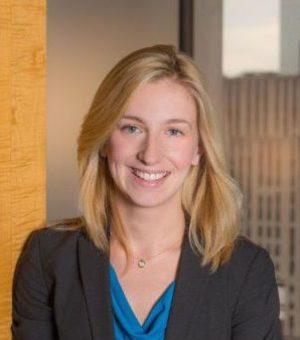Imagine you left home in March 2019 for a year-long trip to a remote location. When you left, newspapers were preoccupied with stories of a college admissions scandal that had caught up a number of Hollywood celebrities, the unemployment rate was a historically low 3.8 percent, and your family and friends promised to welcome you home with a huge party when you returned.
Fast forward to March 2020. You’re back, but nothing is the same. Your family and friends don’t want to hug you or even stand too close. Nearly everyone you know has been affected in some way by layoffs and most businesses are closed. The shelves of your local grocery store are empty, as are the streets of your neighborhood. How do you cope? Who do you turn to for help?
This is the dizzying reality that will face people who have been incarcerated in our nation’s prisons and jails and who are scheduled for release over the next few weeks and months. Some advocates have called for the significant releases of incarcerated people—particularly those who are older or medically vulnerable—in light of the COVID-19 outbreak.
Whether or not such compassionate releases materialize, one thing is—and should remain—certain: People will be leaving our prisons this week, this month, this year, as they normally do. But released to what?
The process of “reentry,” as it has come to be called, is precarious under the best circumstances. People who have been incarcerated face barriers in finding a home and a job, reconnecting with family and friends, and accessing needed medical and mental health care.
Studies have suggested that, in the two weeks following release, the risk of death for a person who has been incarcerated is 12.7 times that of a member of the general public—a staggeringly elevated rate of risk.
While best practices for reentry in the time of COVID-19 are yet to be developed, there are seven key questions that state policymakers and corrections administrators should be asking with respect to every person who is scheduled to walk out of one of our prisons in the near future:
1. Are there procedures in place in advance of release to ensure that the person is free of COVID-19, and are they implemented in a timely manner to avoid delayed release?
2. Does the person have the basic supplies they need—food, hand sanitizer, etc.—to ensure they remain healthy once they’re home?
3. Does the person have a safe home to return to that is also virus-free? If not, what alternative community-based housing options may be utilized?
4. What medical or behavioral health medications and services does the person require immediately and potentially during a two-week quarantine? Do arrangements need to be made for them to access some of those services virtually?
5. Have we prepared the person with the technological literacy and equipment to receive and benefit from virtual, rather than in-person, supports?
6. If the person is being released to parole or other supervision, how are we asking them to interact with their parole officer in a time of social distancing?
7. If the local economy has collapsed, are we providing the person with access to public benefits to support themselves and their loved ones?
Answering no to any of these questions is not a reason to keep someone behind bars longer. But failing to ask them means that we will introduce vulnerable people into situations of even greater chaos and stress than we already do.
It’s imperative that we embrace this crisis as an opportunity to ensure better outcomes at release by planning ahead and cooperating across systems. This is the kind of work that should be done to ensure successful reentry in normal times, and that is even more critical now.
And it is unreasonable and unfair to ask corrections administrators to answer these questions alone. It will take cooperation across disciplines—like housing, health, and workforce development—and among local, state, and federal policymakers to get reentry right.
Adjusting to COVID culture has been hard enough for those of us who have been living the changes day-by-day and whose personal and economic circumstances allow for the best possible preparation and protection. But the people who are reentering their communities from lock-up will have to adjust to these changes all at once.
There is much on our leaders’ plates in these challenging times, but corrections leaders and policymakers at all levels of government and across disciplines need to come together now to determine how best to address the needs of this vulnerable population. Public health and safety demand it.
Editor’s note: This is the first installment in a series related to COVID-19 and its impact on the criminal and juvenile justice systems. For more guidance related to the outbreak, visit the new resource website launched by The Council of State Governments.
Photo credit: California Department of Corrections via WikiMedia Commons.
About the Author











